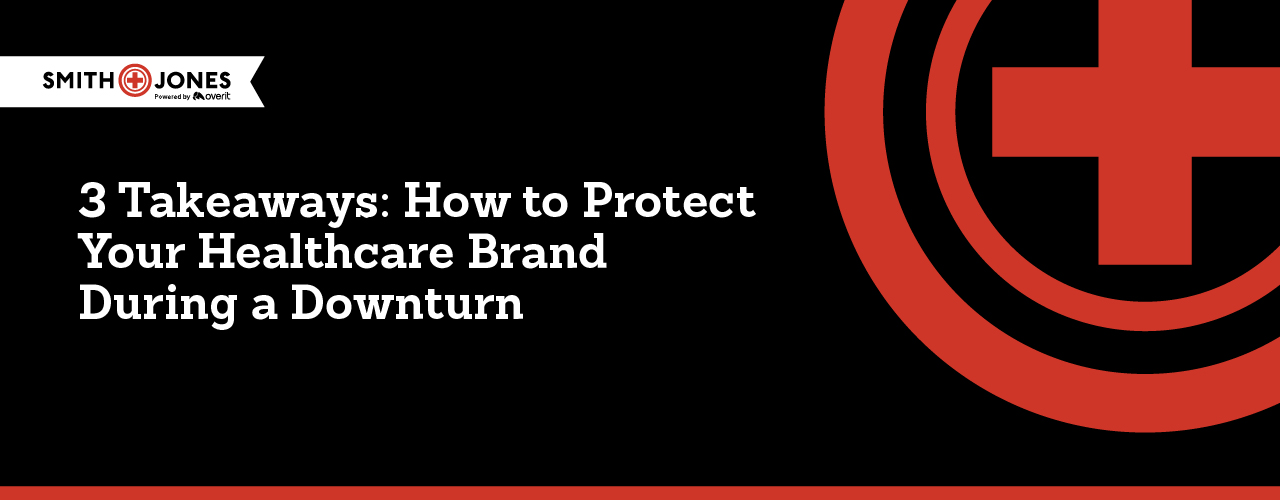3 Takeaways: How to Protect Your Healthcare Brand During a Downturn
Recently, VP Paul Fahey had the pleasure of speaking at the Annual Healthcare and IT Marketing Community (HITMC) Conference in Las Vegas! He presented to healthcare communications professionals on principles of brand management, which explored why branding matters and how to manage your brand during turbulent times.
If you couldn’t join us in Vegas, here is a quick overview of the top takeaways. Interested in having Paul give the full presentation to your organization? Get in touch with us here. Let’s dive in.
Takeaway #1 – In a world disrupted by crisis, a strong brand will help you weather the storm
Since 2020, we’ve been hit by crisis after crisis. Of course, COVID impacted not just our health, but our economy and sparked a wave of social, civil, and political unrest. Now, we’re dealing with the healthcare workforce shortage, the Great Resignation, and a looming economic recession.
With consumers and patients under so much stress, how can you manage consistent, positive experiences and engagements in this increasingly competitive, fragmented, and cluttered world? The answer is with your brand.
Your brand is a strong, consistent message about the essence of your hospital or services. It’s a promise that only you can make. A strong brand will help:
- Articulate the values of your hospital/organization
- Explain why you are competing in the market (What you can do that your competitors can’t)
- Shape patient and donor experience
- Influence patient and donor decisions
- Transcend consumer price shopping
For all internal and external communication, make sure you’re coming back to your brand promise every time.
Takeaway #2 – Have a crisis plan in place
A crisis is any event, issue, or situation that threatens to undermine the relationship between your organization and one or more of its stakeholders; or any event, issue, or situation that may negatively affect your business and/or reputation. People remember how a crisis was handled longer than the details of the crisis itself. Without proactive crisis communications, you’re at risk for long-term damage to your organization–and your brand. To avoid this, use the PEAR method when responding to a crisis: People, Environment, Assets, Reputation. ALWAYS make sure your people are safe before worrying about the other three areas.
Takeaway #3 – Deliver the Message
When communicating with the media or general community during or after a crisis, you must be prepared to protect your brand. It’s not about answering their questions, it’s about delivering your message. So first, establish the key messages you want to deliver. But remember, be honest 100% of the time! You never know how one small “fib” could affect your reputation down the road.
Further Reading:
2023 Healthcare Marketing Trends: Navigating the New Normal
Crisis Planning for Hospitals and Health Systems
Under the Influence ― Second Edition: The Anthology of Healthcare Marketing Best Practices

